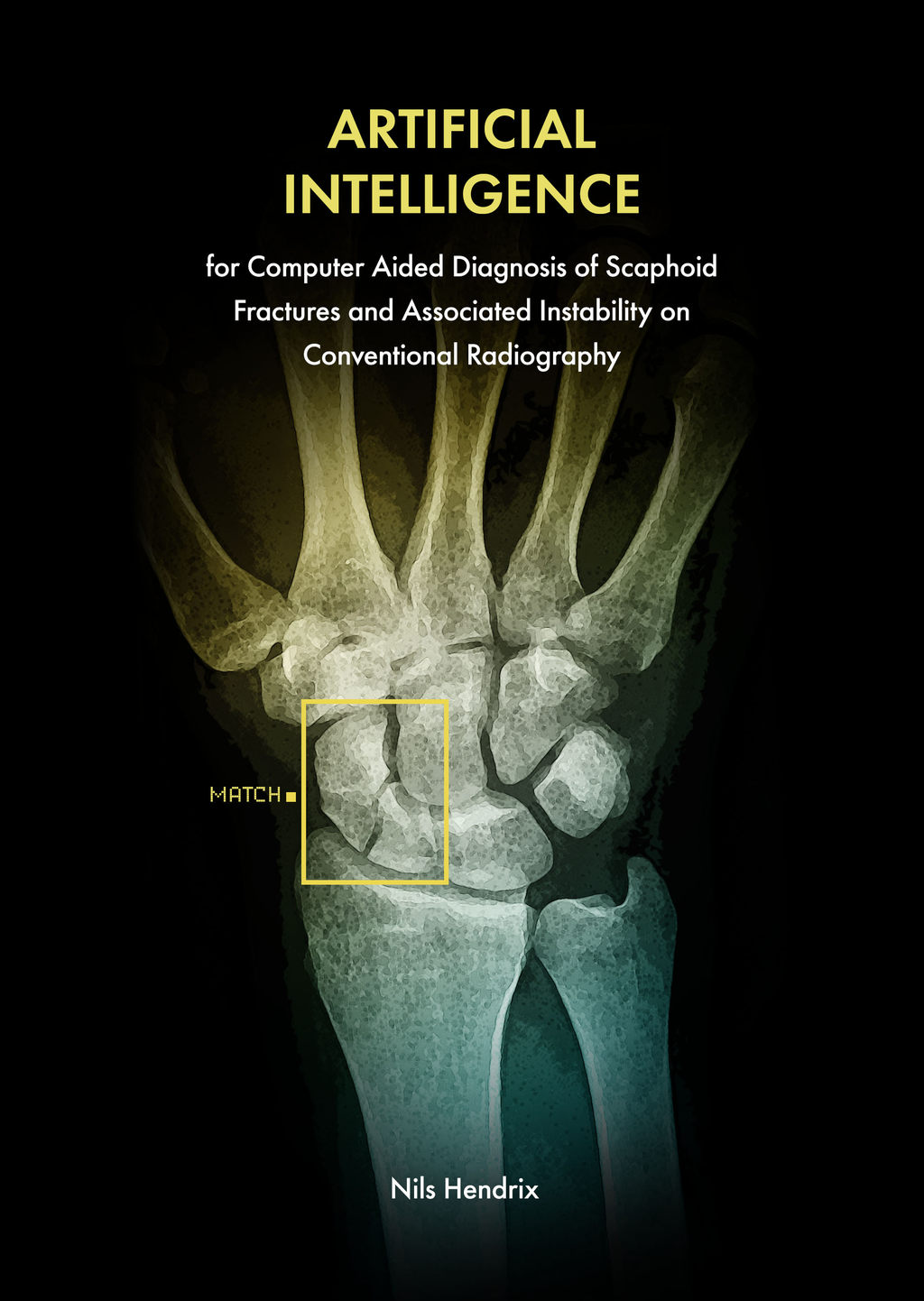Artificial Intelligence for Computer Aided Diagnosis of Scaphoid Fractures and Associated Instability on Conventional Radiography
N. Hendrix
- Promotor: E. Postma and B. van Ginneken
- Copromotor: L. Ong and M. Rutten
- Graduation year: 2024
- Tilburg University
Abstract
Injuries of the hand and wrist belong to the most common injuries in all age groups and impose a large burden on individuals and society. From all hand and wrist injuries, fractures in the scaphoid bone are among the most common and challenging injuries to diagnose due to their subtle presentation on initial radiographs. If not timely diagnosed, these fractures can lead to severe joint degeneration. Consequently, they are structurally overtreated out of precaution. These fractures lead to substantial healthcare costs and diminish the affected individual's quality of life. This thesis proposes the use of artificial intelligence (AI) to assist physicians in the diagnosis of scaphoid fractures and associated wrist joint (carpal) instability on initial hand and wrist radiographs.
In Chapter 2, we present the development and validation of an AI system that uses convolutional neural networks (CNNs) for the automated detection of scaphoid fractures in conventional frontal view radiographs. This system first identifies the contours of the scaphoid, isolates the region for analysis, and then provides a confidence score for the presence of a fracture. It also highlights image regions that were relevant to its decision. The system was trained with radiographs from the Radboud University Medical Center (Radboudumc) and was validated on radiographs from the Jeroen Bosch Hospital (JBZ). The system was found to detect scaphoid fractures just as well as 11 radiologists, which shows its potential to assist physicians in clinical practice.
In Chapter 3 (interlude), we reflect on the impact of the COVID-19 pandemic and describe a collaborative effort of the DIAG research group to develop an AI system for the automated triage of suspected COVID-19 patients. This system analyses a chest CT scan to assess the likelihood of COVID19 and the extent of pulmonary involvement. It was trained and validated with scans from Radboudumc and the Canisius-Wilhelmina Hospital. The assessments of the AI system were found to closely align with those of eight radiologists, which illustrates the capability of AI in addressing emergent global health crises that go beyond orthopaedic injuries.
In Chapter 4, we introduce a new AI system designed for the detection of scaphoid fractures using multiple radiographic views of the wrist. This CNN-based system gives a fracture score per anatomical region to localize potential fractures with even greater precision. We expanded and revised the dataset of radiographs from Radboudumc and then validated the system on radiographs from JBZ. We found that the system's performance was comparable to that of experienced musculoskeletal (MSK) radiologists, and that AI-assistance improved reading times and consistency of the assessments among the radiologists. The system did not significantly increase their diagnostic accuracy, which suggests it has most value as a diagnostic aid for less experienced practitioners.
In Chapter 5, we present an AI system for measuring and detecting signs of carpal instability on hand and wrist radiographs. By using CNNs and statistical models, this system provides measurements that are in line with clinical guidelines. These measurements included the scapholunate distance, scapholunate and capitolunate angle, and carpal arcs of Gilula. The system was developed with radiographs from both Radboudumc and JBZ and was validated on radiographs from Hospital Gelderse Vallei (ZGV). We found that the accuracy of the automated measurements was largely comparable to that of clinicians with different specialties, while it displayed better performance in identifying disruptions in carpal alignment. Therefore, the system may facilitate early detection and treatment of carpal instability, and potentially prevent long-term joint damage.
In the concluding Chapter 6, we synthesize the thesis's contributions and suggest future research directions. Currently, automated fracture detection in all carpal bones remains understudied and there is a lack of public datasets for the development and validation of wrist fracture detection systems. Furthermore, we underline the importance of integrating the investigated AI systems into a single computer aided detection system for clinical practice, which will greatly contribute to the valorization of the acquired research findings.
